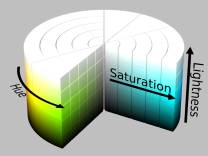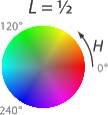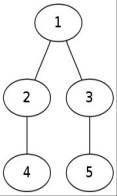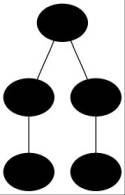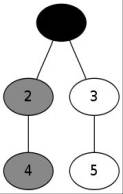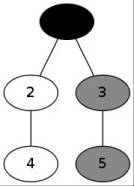Problem H
Graph Coloring in
HSL
Input: Standard
Input
Output: Standard
Output
Most of you must know about RGB color model, where, each color is described via three color components, red, green and blue. HSL(Hue, Saturation, Lightness) is another type of color model, where each color is described by three values, hue, saturation and lightness. It is presented in a cylindrical structure.
|
|
|
|
Figure 1: HSL Model |
Figure 2: Cross
section (at lightness = 0.5) (Those who are using a printed copy of the
statement may not see the actual colour, but you will surely notice the
change of grey shade) |
Figure 1 demonstrates the HSL model. The angle around the central vertical axis is hue, the distance from the axis is saturation, and the distance along the axis corresponds to lightness.
The basic idea behind HSL is, it
starts at hue = 0° at red, passing
through green at 120° and blue at 240° and wrapping to red again at 360°. A cross section of the model is
shown in figure 2.
In
this problem, you have to color a graph with at most P colors,
where P is a prime number. Each color has same same
saturation and lightness, and their hue is evenly distributed starting
at 0° (that is if 3 colors are used, hue will be 0°, 120°, 240°).
Given
a graph G=(V,E), you have to color all vertices v є V, such that color of a node is equal
to the sum of color of it's neighbours. Since, all colors have same lightness
and saturation, they are ignored.
Find
the number of ways to colour the graph. Two colorings are considered different,
if there is at least one vertex, that has different color in the two colorings.
Input
First
line of input contains an integer T(T<=400), the number of
test cases.
This
is followed by three integers N,M and P (1 £
N £ 100, 2 £
P £ 1000000000, P is a prime), the number of vertices, the number
of edges, and the number of colors. All the colors have same saturation,
lightness, and ith
color has hue of i*(360/P) degree. P is a
prime number.
Next
M lines each contain two integers, pi
and qi, denoting that pi and qi
are neighbours (1£pi,qi£N). The graph is bidirectional. All
vertices are identified by a number between 1 and N. There will
be no self loops. All edges will be listed exactly once.
Output
For
each test case, output the number of solutions. This number can be very large.
Output it modulo 1000000007.
Sample
Input Output
for Sample Input
|
2 5 4 3 1 2 1 3 2 4 3 5 3
0 3 |
Case
1: 3 Case
2: 1 |
Description
of the Sample Case 1
There
are 3 colors. So, the hue of them will be 0°, 120°, 240°. Let us assume that, black
represents color with hue 0°, grey with 120° and white with 240°.
|
|
|
|
|
|
Original Graph |
|
|
|
Reference: Description and illustration of HSL
model is taken from wikipedia.
http://en.wikipedia.org/wiki/HSL_and_HSV
Problemsetter: Manzurur Rahman Khan
Special Thanks to:
Mohammad Mahmudur Rahman
